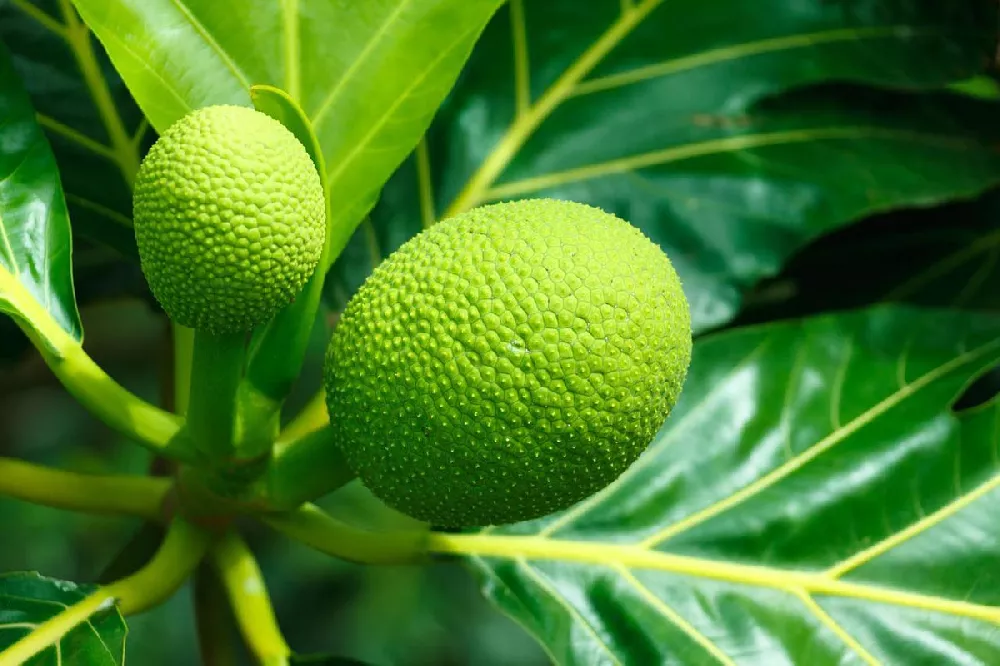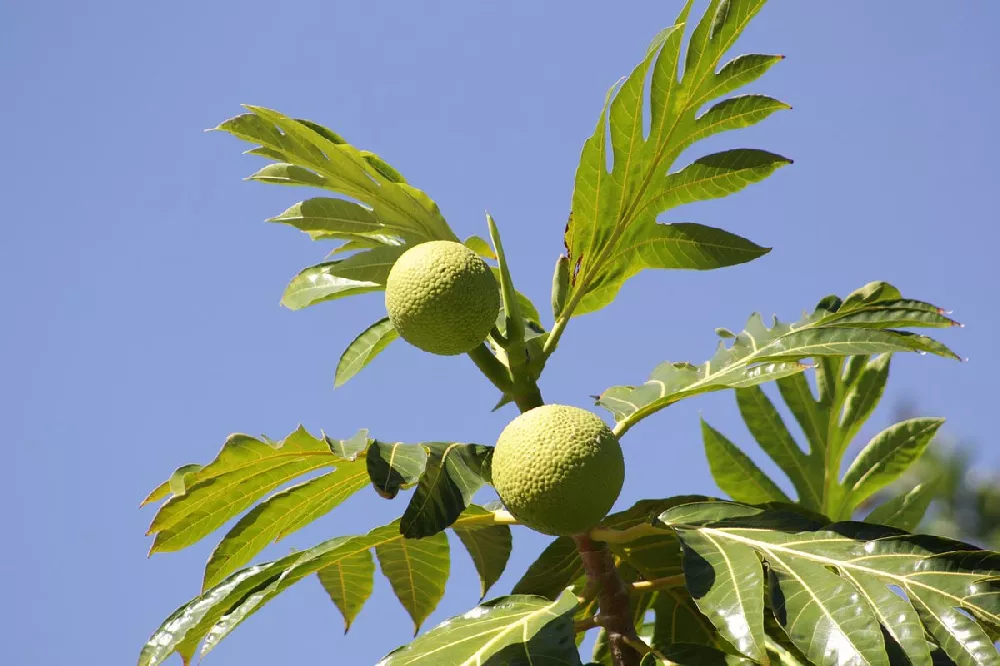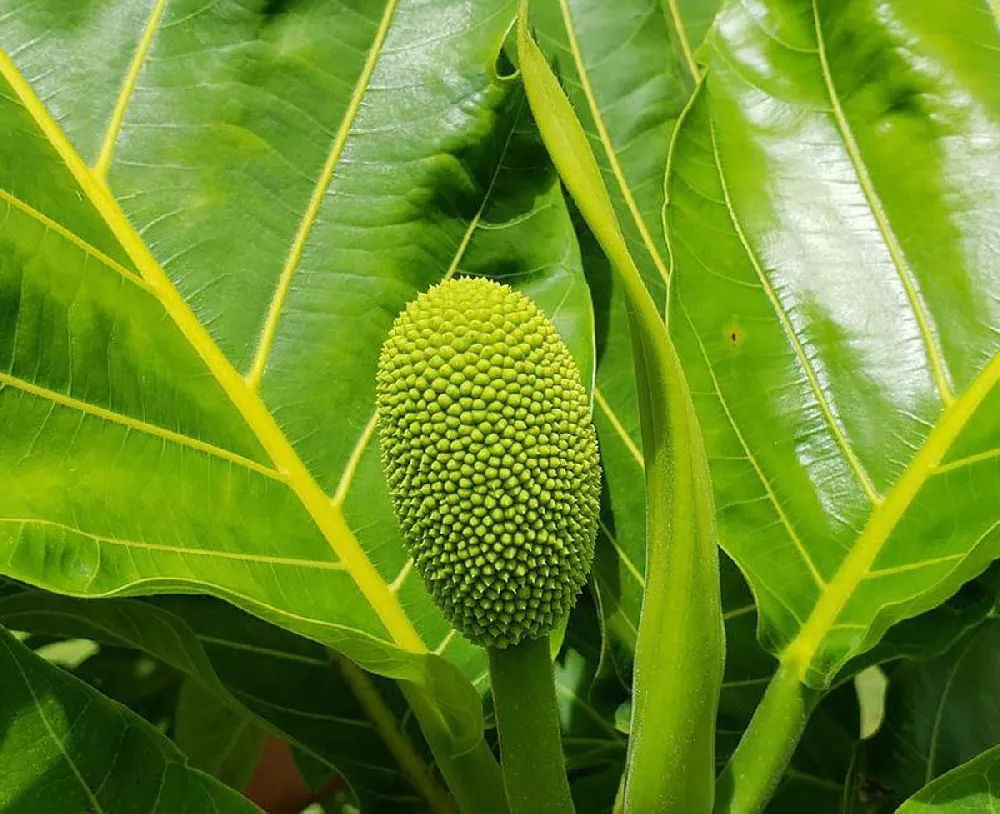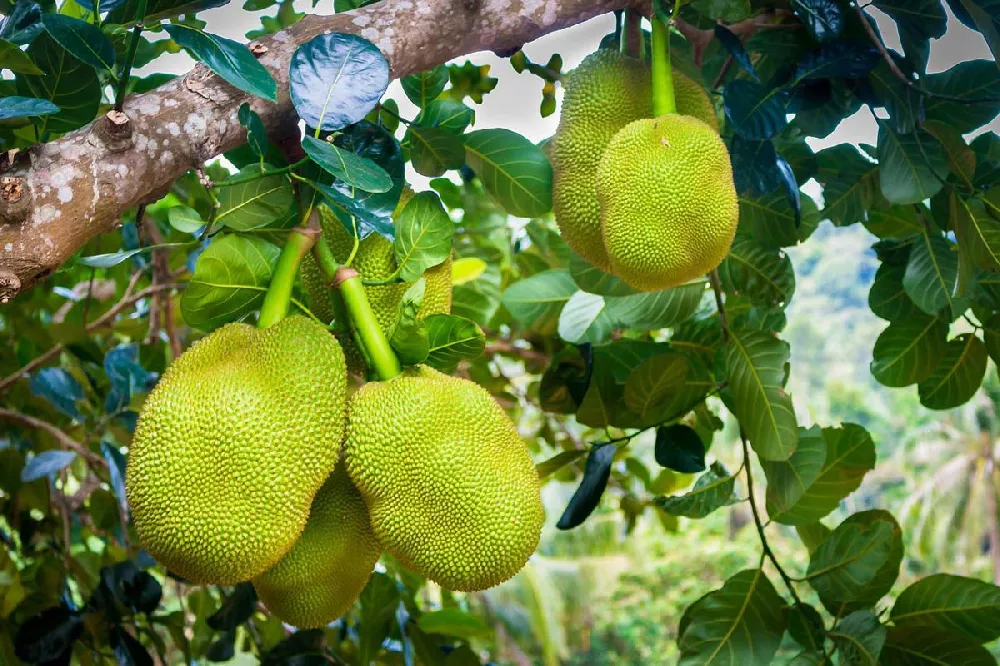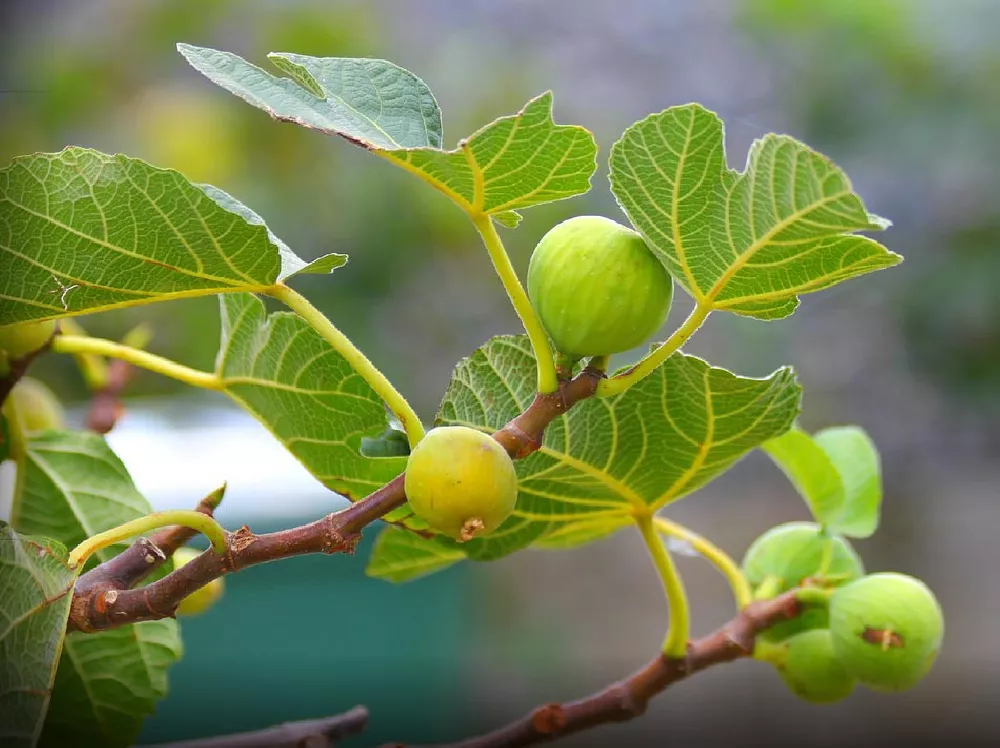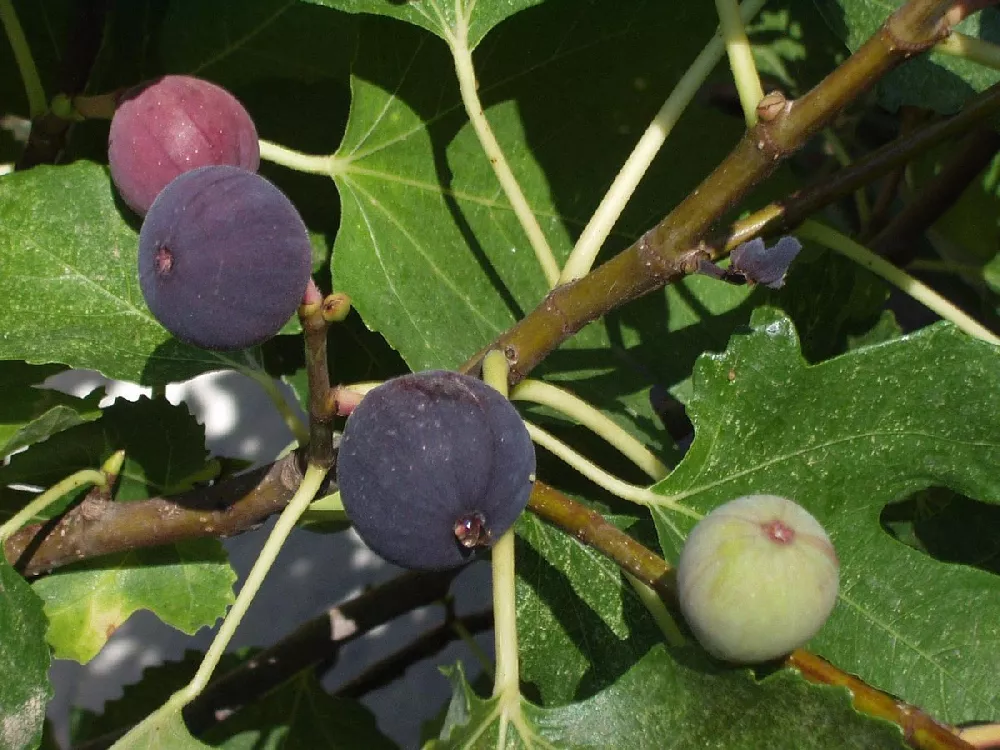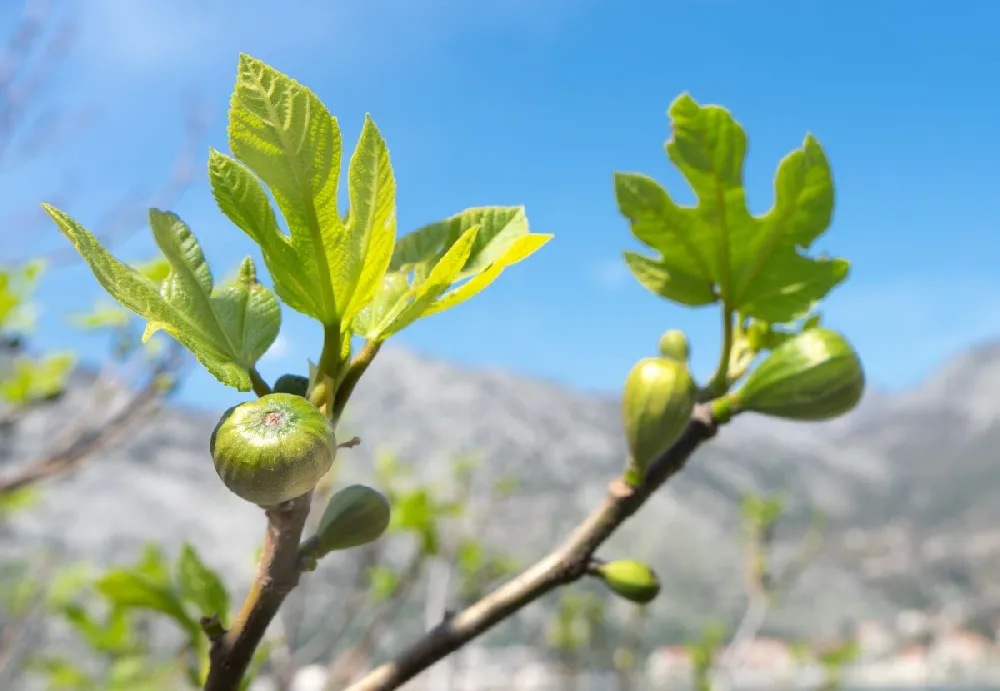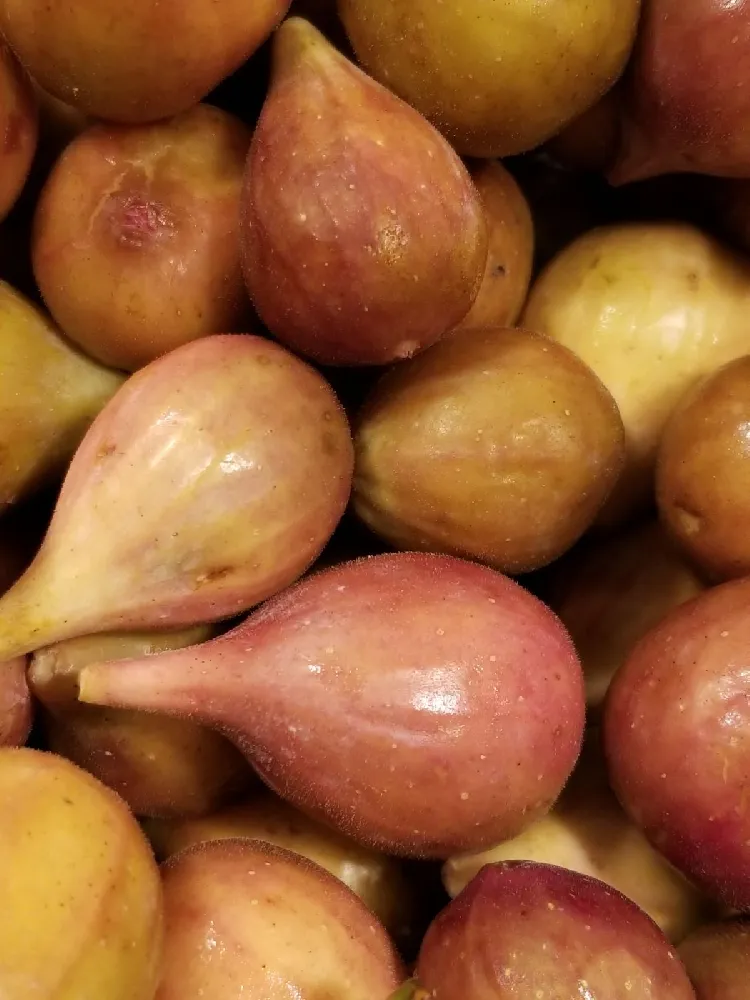- Home >
- Edible Plants >
- Breadfruit Tree
Breadfruit Tree for Sale - Buying & Growing Guide
- Ships in 1-2 days
- 1-Year Warranty Eligible
- Pots or accessories are not included unless specified in the product options.
Shipping Details:
Products shipped through FastGrowingTrees.com. Once your order is shipped, you’ll receive an email with a tracking number and estimated delivery date. Most orders will ship immediately.
Breadfruit is not as well known in the U.S. as other tropical fruit like mangoes or kiwifruits, and that's too bad — this ungainly-looking fruit is nutritious and packed with vitamins, and it tastes good too. Although a mature breadfruit tree, Artocarpus altilis, can top out at 40 to 80 feet in height, it adapts surprisingly well to container growing, so this tropical island native can be grown by those in the northern regions of the U.S. as well. Although the fruit may look like something that Shrek would eat, the tree itself is quite attractive, with large, bright green pinnate leaves on a strong central stalk. Here are a few more reasons to consider a breadfruit tree for your property:
- Its evergreen canopy provides four seasons of interest in the garden.
- The trees are self-fertile, ensuring a harvest even if you only have one tree.
- Cooked breadfruit has a taste similar to potatoes or bread.
Plant Care
Sunlight

Breadfruit trees thrive when they have at least six hours of sunlight a day.
Watering
Water young trees frequently, so that the soil never dries out. Older trees can handle dry soil and some drought.
Fertilizing

Fertilize your breadfruit tree with a product that is designed for tropical trees and shrubs.
Planting and Care
Planting instructions
If planting your breadfruit tree outdoors, site it in a spot that gets at least six hours of sun, in soil that drains well. Make sure you’re not planting it under overhead utility wires or cables or less than 10 feet away from a building. Unpot your sapling and tease out any encircling roots, which can girdle the tree and slowly kill it. Dig a hole that’s as deep as the root ball and twice as wide. Place the tree in the hole, spreading out the roots, and fill in around it with topsoil. Tamp down soil as you go to eliminate air pockets. Water thoroughly. Apply a 2- to 3-inch layer of an organic mulch, such as bark chips, around the root zone, to conserve moisture and hinder weed growth.
Watering and nutrients
When your tree is young, it benefits from consistent moisture, so water it every few days — just enough so that the roots don’t dry out. Keep an eye on the leaves; if they start to wilt, it may not be getting enough water. Mature breadfruit trees are somewhat drought-resistant, and once your tree has established itself, it will need less watering. Fertilize your tree throughout the growing season with a product that is designed for tropical trees and shrubs.
Pollination
Breadfruit trees are monoecious, meaning that a single tree has both male and female reproductive organs. What this means for you is that you only need a single tree to be able to harvest fruit, though you may increase your tree’s harvest if you have multiple trees. In the wild, breadfruit trees are pollinated by fruit bats, but cultivated varieties are able to produce fruit without being pollinated.
Pruning
Prune your breadfruit tree after you harvest the fruit. Prune your tree once it is roughly 5 feet tall. Trim off the leader (main branch) to allow side branches to bush out and form a more full canopy. This will also limit the height of the tree. Prune for shape as needed, being careful not to cut back more than a third of the tree’s limbs in a single year. Monitor your tree for broken, diseased, or damaged limbs, and cut these out whenever you see them.
Pests and diseases
Breadfruit trees may harbor infestations by common insect pests, including mealybugs, scale insects, and even ants. Most will not seriously damage a healthy tree. Prune off branches that are severely infested, and keep the area around the base of the tree free of debris and leaf litter to deter insects. Breadfruit trees are susceptible to several fungal infections, including breadfruit fruit rot and anthracnose. Copper fungal sprays may help, and trimming back low branches and removing infected fruit may keep infection from spreading.
Harvesting
A ripe breadfruit turns a yellow-brown in color and, when completely ripe, will fall from the tree, which can bruise it. The stem color may also change from green to brown. Cut the fruit off the tree just before it seems ripe, and hold it upside down so that the prolific sap will bleed out of the stem. It will need to drain for about an hour to avoid bringing the sticky sap into your kitchen or harvest shed.
Achieving maximum results
As a tropical plant, the breadfruit tree can be grown outside in the southern areas of the continental U.S.: much of Florida, parts of Texas, and the coastal regions of California. But that doesn’t mean northern gardeners can’t experience this intriguing tree. Your breadfruit tree can be grown in a container, although it may take a little more work to keep it happy. Choose a container that’s at least twice as large as the root ball, and use a good-quality potting mix when planting. Your breadfruit tree can live outdoors whenever the temperatures are above the upper 50s to low 60s Fahrenheit, but it should be brought inside if temperatures are colder than that. Container-grown trees tend to need more frequent watering than those grown in the garden, as well as more regular feeding. You will also need to prune it regularly to keep it to a manageable size.
FAQs
How big will a breadfruit tree get?
How can I incorporate a breadfruit tree into my landscape?
A breadfruit tree planted outdoors can actually serve as an attractive specimen tree, placed in a strategic sunny location in a front or back yard. The tree's large, pinnate leaves are deeply lobed and attractive and can provide a welcome dose of texture to a garden setting. A container-grown breadfruit tree makes an excellent accent on a patio — think of one in a large terra cotta or stone decorative pot, surrounded by smaller potted plants to provide some floral accents.
How is the fruit commonly used?
It's usually not eaten raw. Try sauteing breadfruit chunks with garlic in a good-quality olive oil. Another common preparation is to eat it mashed and mixed with coconut milk and then baked in banana leaves or parchment paper. It can also be pickled, or fried like french fries. The taste, in fact, is often likened to that of a potato, and it can generally be prepared in the same way.
Compare Similar Products
You can't add more Product Name - Product size to the cart.
OK